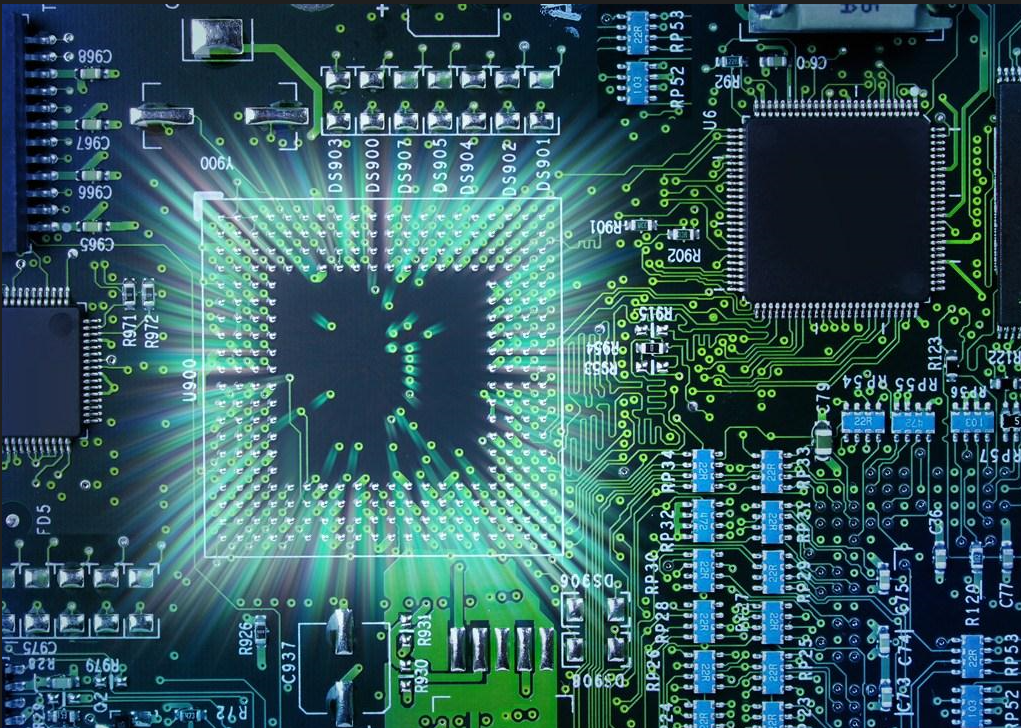
design Skills and Precautions of 24 GHz MICrostrip Array Antenna
PCB manufacturers, PCB designers and PCBA manufacturers will explain the design skills and precautions of 24GHz microstrip array antenna
Coaxial structure interconnection
In the frequency band greater than 10GHz, PCB microstrip printed antenna has obvious advantages over waveguide slot antenna, lens antenna, reflector antenna and other antennas. Mature PCB processing technology can effectively control the production cost of microstrip antenna. The multi-layer hybrid voltage technology of antenna board, RF board and low-frequency digital analog circuit board also makes the entire RF system highly integrated. RO4350B plate produced by ROGERS company has superior high-frequency performance and low production cost, and has been widely used and verified in commercial RF systems. The author has successfully designed a series of 24 GHz microstrip array antennas using Rogers RO4350B, which have been applied to the company's listed products. Therefore, some design skills are summarized for their application.
Thickness selection
The thickness of the microstrip antenna is mainly selected by integrating three factors: the working bandwidth of the microstrip antenna, the design of the feed network and the antenna efficiency. First, the thickness of PCB affects the impedance bandwidth of microstrip antenna. The SMAller the thickness of PCB, the larger the array size, and the smaller the working bandwidth of antenna. Second, the thickness of PCB determines the width of microstrip line in the impedance change section of the feed network. For the RO4350B plate with a thickness of 20mil, the width of 50 Ω and 100 Ω microstrip lines is 1.13mm and 0.27mm respectively, while the corresponding resonant length of the microstrip antenna at 24GHz is about 3mm. If the impedance of a microstrip transformation section in the feed network is too small or too large, the microstrip line will be too wide or too narrow, and if the microstrip line is too wide, it is easy to cause structural interference, Narrow microstrip line will lead to processing difficulties. Third, the dielectric thickness affects the conductor loss of the microstrip line, thereby affecting the antenna efficiency. Based on the above factors, the author's design experience is that the thickness of small arrays is 10mil or 20mil, the thickness of large arrays is 20mil, and the thickness of RF boards is 10mil.

Antenna type
As shown in Figure 1, the microstrip array antenna is divided into parallel fed array and series fed array according to the feeding mode. The feeder line of parallel feed array is long, which leads to large incoming loss of feed network. For large arrays, the antenna efficiency is often limited, so the series fed array with more concise routing is generally selected. The series fed array is a resonant antenna, and its working bandwidth is smaller than that of the parallel fed array, but the series fed structure is easier to realize the weighted excitation. The serial fed microstrip array antennas of different scales designed by the author are all made of 20 mil thick RO4350B plate. It can be seen that the impedance bandwidth decreases with the increase of array size. The bandwidth is 1.2GHz with 16 elements, but only 0.75GHz with 324 elements. The frequency modulation bandwidth of the 24 GHz radar using the continuous wave system is usually less than 250 MHz, so the impedance bandwidth of the series fed array can meet the design requirements of most systems.
The microstrip array antenna is divided into parallel fed array and series fed array according to the feeding mode
Interconnection of antenna and RF chip
At present, domestic and foreign chip manufacturers have mass produced 24GHz RF chips on the MARKet. In the zero IF radar architecture, the pins of the RF chips are directly connected to the microstrip transceiver antenna ports. When the composite board form of antenna board (HF board)+several layers of FR4+RF board (HF board) is used, the interconnection of antenna and RF chip is realized through metallized vias. In the 24GHz frequency band, the discontinuity introduced by metallized vias longer than 1mm will be very obvious. The solution is to add several symmetrical metallized grounding vias around the metallized vias to form a coaxial like transmission structure. When the antenna and RF chip are located on the same side of PCB, RF chip and transceiver antenna are directly connected through microstrip line or coplanar waveguide. This design can minimize transmission line insertion loss.
Low sidelobe design
The sidelobe level of the pattern is an important design index of the array antenna. The low sidelobe design can reduce the environmental interference outside the radar main beam, which is equivalent to a spatial filtering and is very effective for improving the radar signal to noise ratio. The sidelobe level of the uniformly distributed array antenna is more than - 13dB. In order to obtain lower sidelobe, the power fed into each array element is a low sidelobe weighted distribution through the feed network. Chebyshev distribution and Taylor distribution are commonly used for low sidelobe weighted distribution with equal phase and unequal amplitude. According to the sidelobe level and the number of elements, it is easy to synthesize the ideal weighted distribution. The remaining work is to repeatedly optimize the feed network to make the power fed into each element close to the ideal distribution. PCB manufacturers, PCB designers and PCBA manufacturers will explain the design skills and precautions of 24 GHz microstrip array antenna









